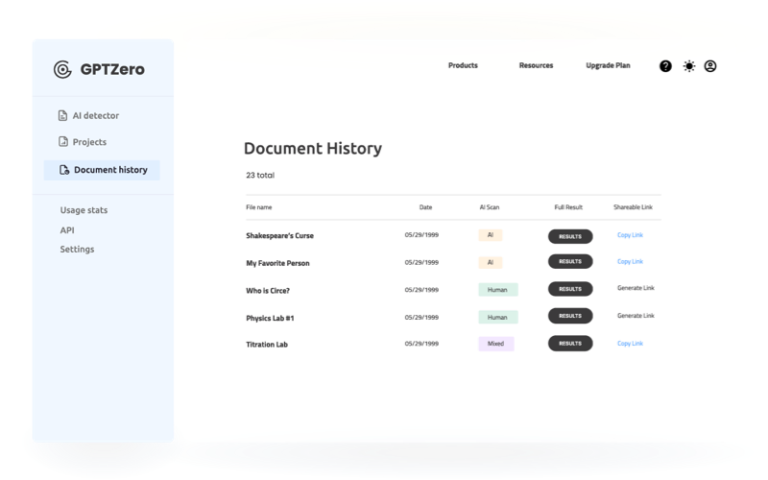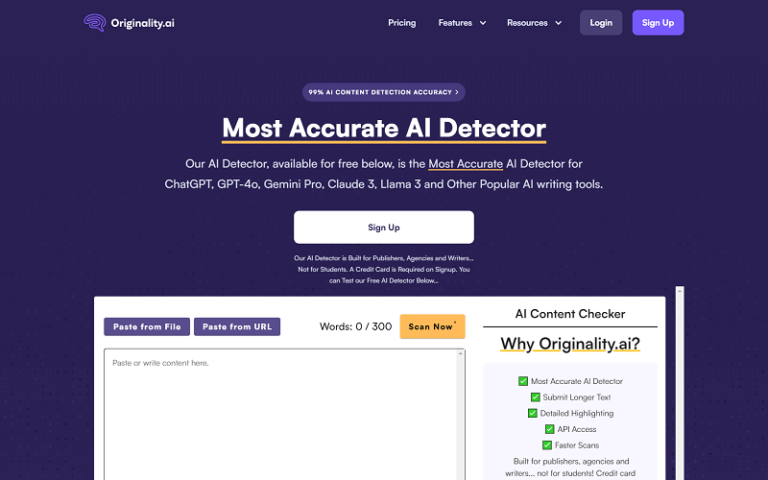Home » AI Tools » AI Detection » GPTZero
GPTZero

What is GPTZero?
Main Features
AI Detection: The primary feature of GPTZero is its ability to analyze text and determine if it was produced by an AI language model.
Scoring System: GPTZero assigns a score to the text based on its analysis, indicating the likelihood that the text is AI-generated.
Ease of Use: The tool is designed to be user-friendly, allowing users to quickly input text and receive results.
Web Interface: GPTZero is typically accessed through a web interface, making it easily accessible to a wide range of users.
Pros and Cons
- Quickly identifies AI-generated text, saving time and effort in manual review processes
- Being a web-based tool, it can be used by anyone with an internet connection
- GPTZero is a timely tool that addresses the need to verify the originality and authenticity of written work
- May not be 100% accurate and could produce false positives or false negatives
How to Use GPTZero?
Access the Tool: Visit the GPTZero website, typically through a web browser.
Input Text: Paste the text you want to analyze into the input field provided by the tool.
Analyze: Submit the text for analysis. GPTZero will process the text and apply its algorithms to detect AI-generated content.
Review Results: GPTZero will provide a score or a report indicating the likelihood that the text was generated by an AI.
Interpret Scores: Understand the scoring system to make an informed decision about the text’s origin. A higher score may indicate a higher likelihood of AI generation.
Take Action: Use the results to make decisions about the text in question, whether it’s for academic integrity, content verification, or other purposes.


